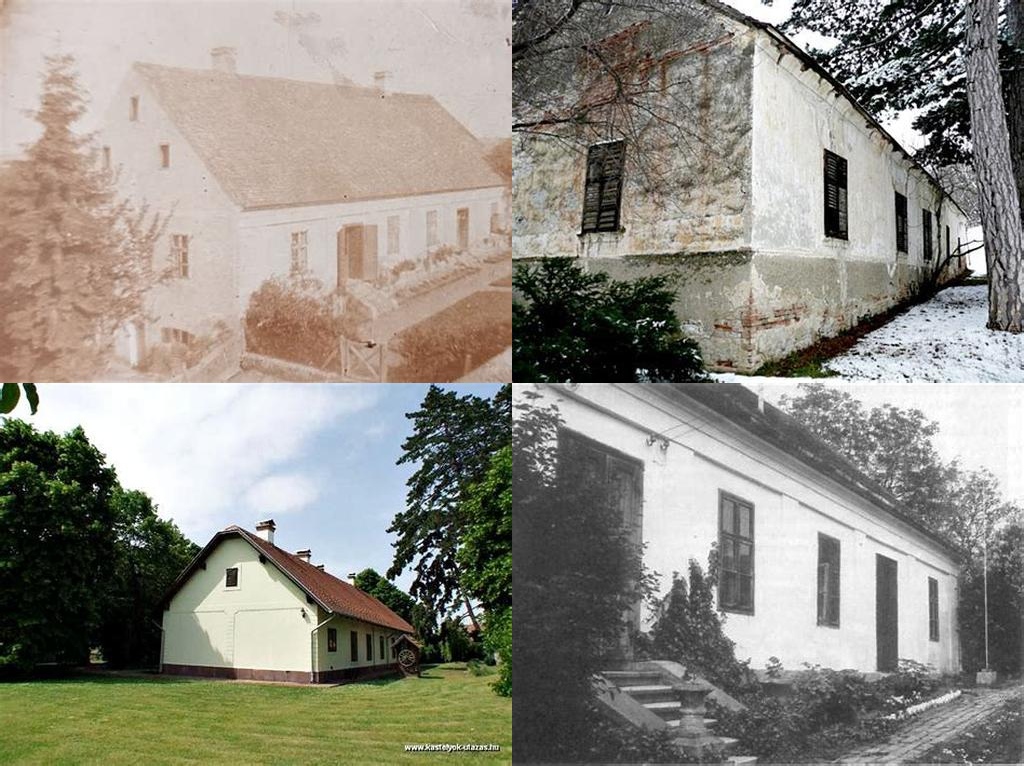
Kazay-kúria in the tiny Somogy county village of Kötcse sits quietly, its yellow facade peeking out from old trees—a piece of history you’d probably miss if you blinked as you drove by. Yet, if you stop and linger, as I have, the mansion reveals its layered stories of the past, all woven tightly with tales of ambition, lineage, and compelling personalities who once walked its timeworn floors. This isn’t your typical showpiece palace; it’s got a quietly rebellious character, much like the families who called it home.
Back in the 18th century, when the Hungarian countryside brimmed with restless nobility, Kötcse had become a favored nook for wealthy families seeking both status and sanctuary. The Kazay family, with their Protestant roots and legal acumen, were among the town’s most influential inhabitants. It was János Kazay, a judge and legal scholar whose name is woven into local lore, who commissioned the construction of his grand mansion in the late 1700s. Built with the clear intent of permanence, the Kazay-kúria stands as a sturdy, L-shaped building, its classical style somehow both humble and noble. Wandering the halls, you can still sense an era when respect for knowledge and progressive thinking lingered in the air — a kind of quiet enlightenment humming between the walls.
What sets the Kazay-kúria apart from other country houses scattered across Somogy is not its exterior grandeur (although it certainly has a poised elegance) but its lived-in humanity. The family invested not just money, but ideals. Local gossip, as preserved by village elders, tells how the Kazay family would host intellectual soirées—sometimes bordering on radical for their time—inviting poets, lawyers, and teachers to break bread beside the tiled stove. The mansion itself became a kind of informal academy. Even after political winds shifted and religious tolerance was sometimes just a rumor, the Kazay family persisted in their civic-mindedness, pouring themselves not only into estate management but local education and culture.
Over the years, the mansion weathered history’s tempests. The Napoleonic Wars swept through Europe’s borders, and with each upheaval, the village and its gentle manor endured. In the 19th century, following the Hungarian Reform Era, members of the Kazay family played quiet but crucial roles in legal reforms that would eventually shape the modern county. The mansion’s library, modest by palace standards but invaluable to village youth, was always stacked with treatises, theological debates, and the occasional banned book smuggled in from broader Europe. There’s no plaque commemorating the sleepless nights spent here sifting through legal arguments, or the passionate fireside discussions under the painted ceiling, but if walls could talk, Kazay-kúria would recount it all.
The 20th century, as you might expect, wasn’t kind to such places. War and politics upended the old order. While some mansions were lost to neglect or conscripted into unrecognizable uses, Kazay-kúria quietly shifted roles with each regime, at times serving as housing for officials or storage for the local collective. Through it all, villagers kept the stories of the Kazay family alive, sharing memories of harvest dances in the garden, whispered legends of secret passageways, and local jokes supposedly invented during long winter evenings around the mansion’s heavy wooden table.
Visiting today, you’ll notice the marks of careful restoration and resilient neglect side by side. Some rooms have been gently revived, their original wooden floors creaking underfoot, windows framing wild gardens where ancient roses and orchard trees tangle freely. You might chance upon a temporary exhibition—paintings by regional artists, or maybe a photographic essay about rural life—or find yourself in the middle of a local gathering, music drifting out beneath vintage chandeliers. The Mansion has quietly become a hub for those who crave historical authenticity rather than slick curation. Sitting on the terrace, sipping coffee as sparrows bicker in the vines, you realize that Kazay-kúria is less a museum than an ongoing project—a patchwork of generations, ideas, and rural resilience.
If you’re the sort of visitor who prefers faded grandeur to sterile perfection, and who sees beauty in imperfection and layered stories, then Kazay-kúria is worth the journey. Go with an open mind and a good pair of shoes—wander the lawns, duck into the cool shade of the old limes, and let your imagination patch together the centuries. The big moments of history may have happened elsewhere, but in Kötcse, at this mansion, you can almost hear the distant echoes of debates, laughter, and the steady heartbeats of a remarkable family.





